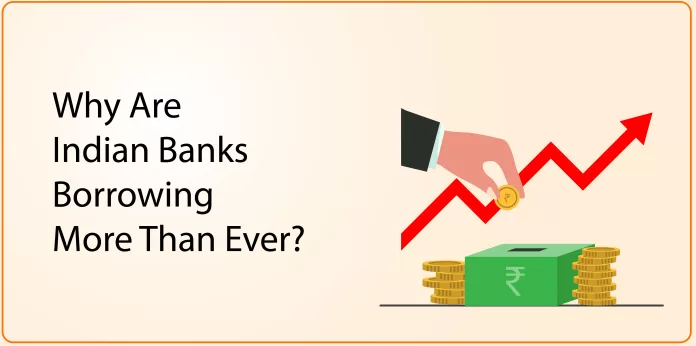What’s behind this sudden thirst for funds? Buckle up, we’re diving deep into the world of banking shenanigans.
Three main culprits elbowed their way into the bank’s lending party:
The Central Bank’s Mop-Up Mission:
To curb inflation, the Reserve Bank of India (RBI) tightened its grip on liquidity, making it scarce and expensive for banks. This left them scrambling for loans to keep the credit flowing.
Credit Craving Customers:
Demand for loans soared across sectors, from businesses hungry for expansion to individuals chasing mortgages. Banks, eager to please (and maintain their profits), had to borrow to meet the demand.
Deposit Dilemma:
People, lured by the siren song of the stock market and mutual funds, kept their wallets tightly shut. Deposits grew at a sluggish 14%, lagging far behind the 20.2% credit growth, forcing banks to borrow the difference.
HDFC’s Merger Meltdown:
Remember the big HDFC-HDFC Bank wedding in July? Turns out, it wasn’t just a romantic affair, it was a financial game-changer. HDFC, previously an NBFC (non-banking financial company) with heavy bond borrowings, became part of the bank. Boom! Suddenly, those borrowings showed up in the bank’s books, inflating the overall borrowing figures.
Read: Comprehensive Analysis of HDFC Bank’s PAT growth
So, what does this borrowing bonanza mean for us?
- The Good: Banks are lending, businesses are expanding, and the economy might be humming along.
- The Bad: High borrowing can be risky, making banks vulnerable to rising interest rates or economic downturns.
- The Ugly: The deposit slowdown could be a worrying trend, indicating a shift in how people save and invest.
Insights Galore:
Banks need to find smarter ways to attract deposits, offering competitive rates and innovative products.
The government might need to step in to boost financial literacy and encourage people to save in formal channels.
Diversifying investments beyond the stock market could help stabilize deposits and reduce banks’ reliance on borrowing.
The Bottom Line: Bank borrowing isn’t inherently bad, but it’s a tightrope walk. Keeping a keen eye on the reasons behind the borrowing, its long-term implications, and finding ways to address the deposit slowdown are crucial for a healthy and sustainable financial future.
So, the next time you hear about bank borrowing, remember, it’s not just about numbers on a spreadsheet. It’s a story of economic trends, changing consumer behavior, and the delicate dance between growth and risk. Stay informed, stay curious, and keep asking questions!


